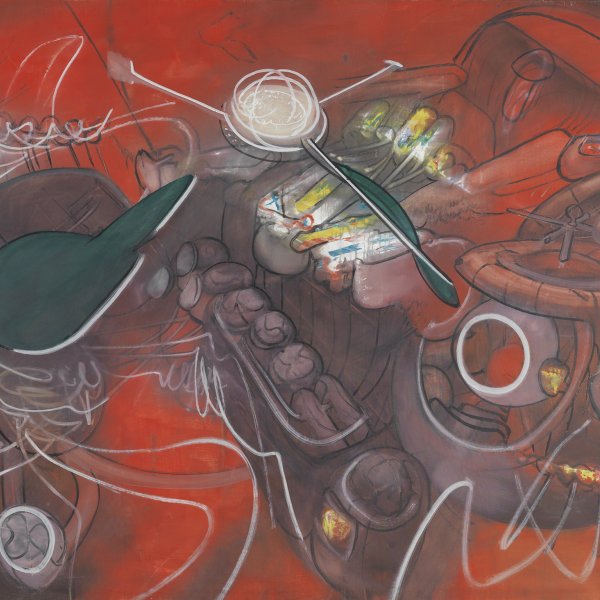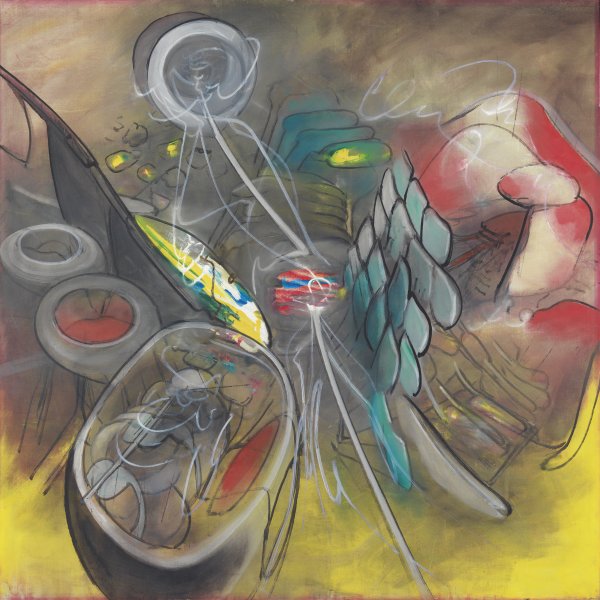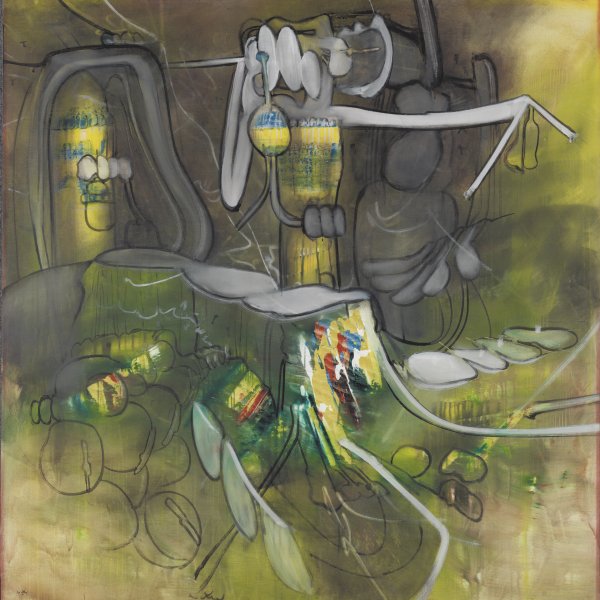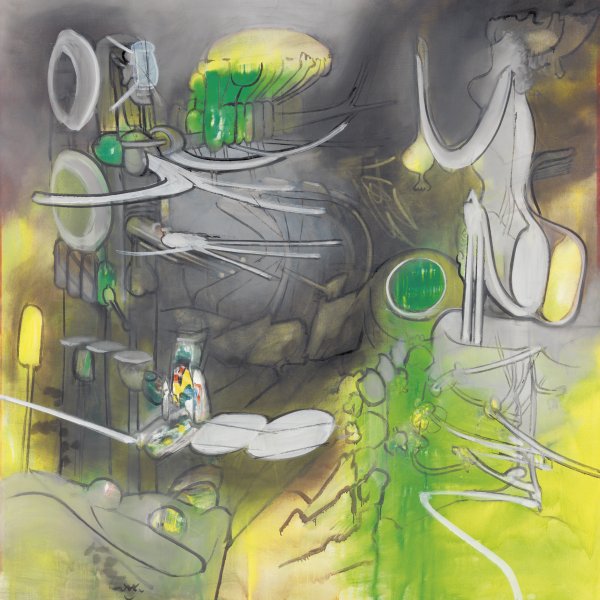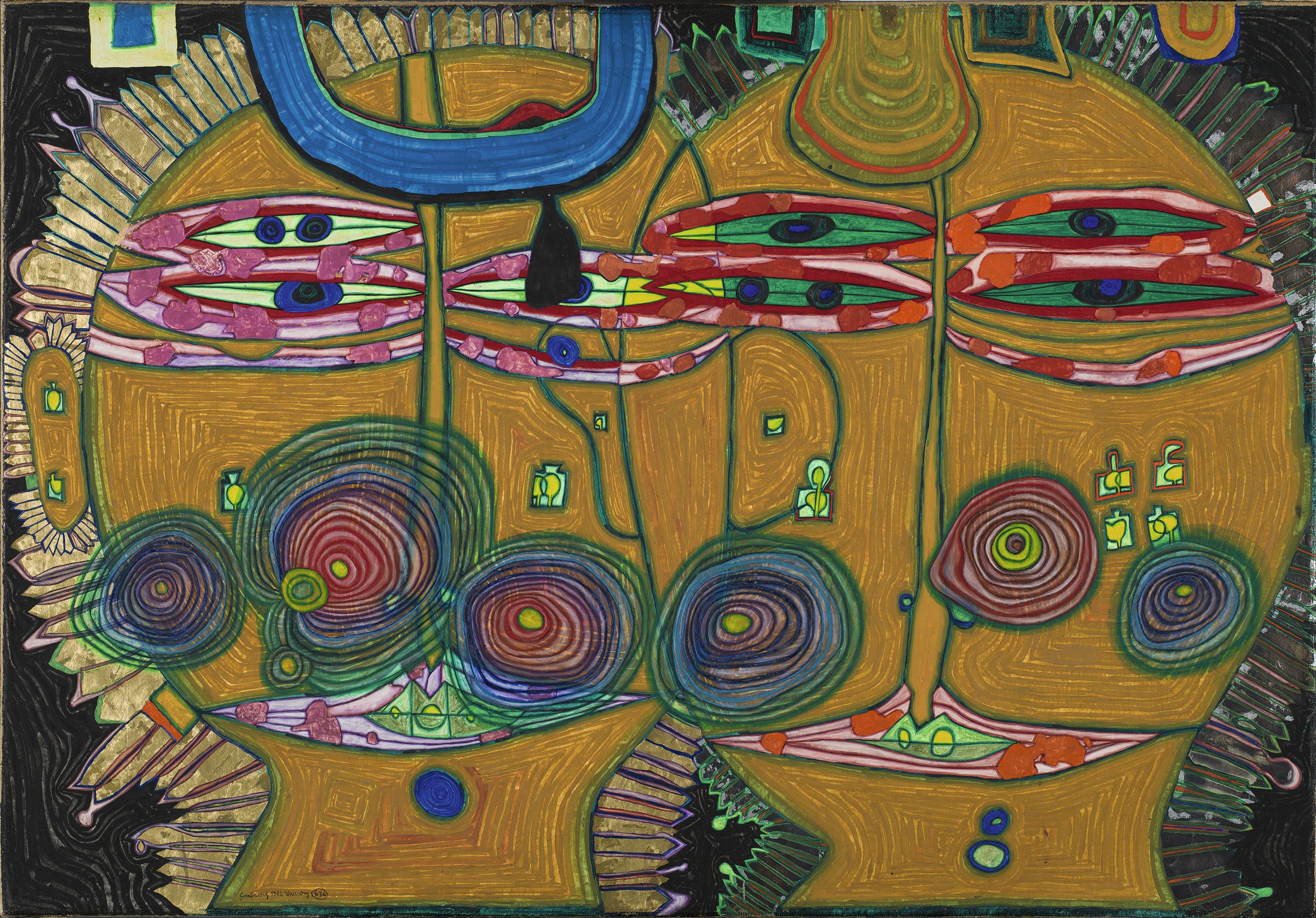Sun and Moon. The Aztecs
Friedrich Stowasser, an extravagant personality born in Vienna and known by the pseudonym Hundertwasser, called himself a literary and decorative painter, which is precisely what he was. The unusual and eccentric work of Stowasser, who was known more for his architecture than for his paintings or sculptures is far removed from any of the trends of his period, although it is directly derived from the decorative tradition of the Viennese ornamentation of the Jugendstil and the painting of Gustav Klimt.
Sun and Moon. The Aztecs, executed in 1966, is an example of his particular abstract and decorative style underpinned by a personal philosophy of life according to which art is the path towards a new form of progress. Viewed from a distance it appears to be a flat, very colourful abstract composition dominated by circles and spirals, but as we move closer certain figurative allusions become more recognisable. For the artist, the spiral could be a symbol of birth, movement, the beginning or the end, although irrespective of its significance it was highly appropriate as a decorative motif. As in most of Hundertwasser's paintings, the title of the work is merely a witty idea of the artist and, although referring to a motif from the outside world, bears no relationship to what is depicted on the canvas.
Paloma Alarcó





